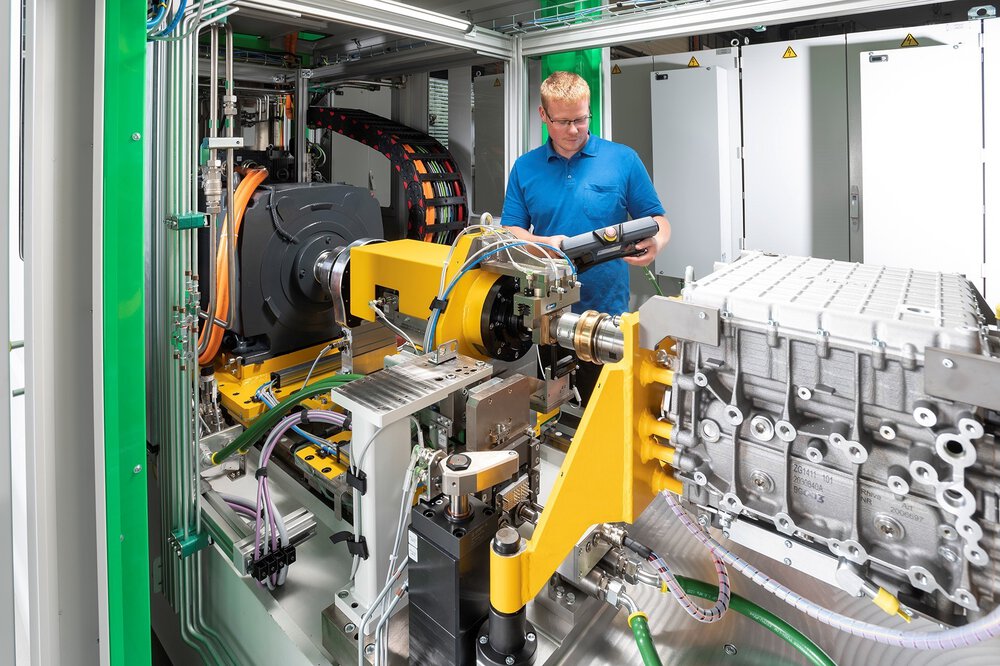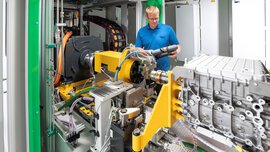Sustainable production works best when highly automated
April 11, 2022
- Many examples of resource-conserving automation
- Flexibility extends equipment service life
- New markets for automation technology
Sustainable production is good for the environment and profitable for companies. Various studies outdo each other projecting savings generated by resource-conserving production technology. One thing is certain: We are talking billions here. automatica, which will take place from June 21 to 24 at the Munich exhibition site, will show how to tap into this potential.
The fact that sustainability efforts have arrived in the important automotive industry is evidenced by the activities of manufacturers trying to make their factories carbon-neutral. Mercedes is aiming for complete carbon-neutrality by 2039 and is currently testing a wide range of energy-saving production technology at its ‘Factory 56’ pilot plant in Sindelfingen. BMW and many other car manufacturers are pursuing similarly ambitious goals.
What is the potential contribution of automation to production processes that deliver results of at least the same quality while using less energy and resources—within and beyond the automotive industry? This question will be asked and answered at automatica 2022.
Reprogramming, not disposal
The flexibility of robots provides a real push towards sustainability. A traditional, highly automated production line with stationary conveyor technology in the body shop has the same service life as the vehicle model it is used to produce. This is quite different in the smart factory: Here, highly flexible robots and AGVs take over all process steps including transport from one station to the next. This enables the implementation of model changes through simple reprogramming. Thus, production of the successor model will be up and running in no time using the same flexible and highly productive equipment available in the plant. This is not only a considerable cost advantage—it also conserves resources.
Second life for robots
The same applies, of course, to the robots themselves. Apart from energy consumption, their service life is the determining factor for their sustainability. An example from Stäubli: For its robots, the manufacturer relies on drive technology from in-house development with a far above-average service life. “Our robots are of such high quality that we overhaul old models and, freshly updated, send them on to a second life. And the drives perform with the same dynamics and precision as on day one”, promises Peter Pühringer, Managing Director of Stäubli Robotics.
Fanuc is another company pursuing this kind of sustainability. The Japanese manufacturer also sees the longevity of its robots as their biggest strength. In fact, there are quite a few robots being used in the field that have been doing their job for more than 20 years. So it's only logical that Fanuc wants to stock spare parts for decades and guarantee lifelong service.
Lightweight design saves energy with every movement
Automation always means movement. Every movement consumes energy—and the less weight is moved, the less energy is needed. That means: Components such as linear axes, robots, grippers, and tools should be as light as possible in order to achieve maximum sustainability.
The weight reduction solutions that exhibitors from the various sectors rely on will be one of the exciting topics at automatica. Are developers relying on metallic lightweight materials such as aluminum, magnesium, and titanium, or are they increasingly turning to fiber-reinforced composites?
Saving energy in automation: with an eye for detail
There is a practical example on the subject of ‘automation with a sustainability effect’ at BMW located in the catchment area of the automatica trade fair location. The car manufacturer installed a flexible electric gripper system on its energy-efficient six-axis Kuka robots to replace the pneumatic grippers previously used in axle beam production at the Dingolfing component plant.
This has two advantages for the plant. Roland Treitler, Head of Chassis and Drive Systems Pre-Development, explains: “Energy consumption of the new grippers is reduced by more than 90 percent compared to the pneumatic ones because we can now do without compressed air in axle beam handling.” In addition, the gripper systems are significantly more flexible: “We can use them for different derivatives and no longer have to change them with every new model. This allows us to use them for a longer time, for example, after model changes, which saves both material and investment costs.” The new system is currently being used on multiple production lines for different series.
New market for automation
But the combination of automation and sustainability has another aspect to it. For example, new markets for automation specialists are created as batteries or electric motors for e-mobility are manufactured in large series.
To give another example of many: automatica exhibitor Teamtechnik has developed a standardized platform for end-of-line testing and calibration of complete e-drives, e-axles, electric motors, as well as hybrid drives. The company consistently focused on saving resources and energy during this process. The energy used to drive the components under test is recovered during brake testing, which is part of the test cycle.
How digital twins help save energy
Such test benches with energy recuperation are already available. However, automatica will also venture a look into the future of ‘sustainable automation’ and inspire its visitors. The ‘digital energy twin’ is another exciting field of development and research that some exhibitors such as Bosch Rexroth are involved in. It can be used to determine the energy consumption of equipment such as automated assembly and conveyor systems even before their development is complete, and to optimize it further in iteration steps—thus making an additional contribution to sustainable production through automation.
Downloads
430062
Belonging images







- PR Manager
